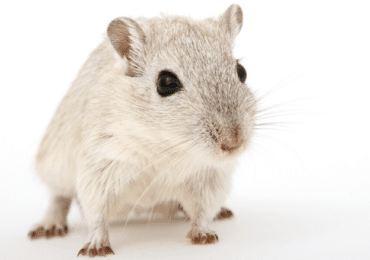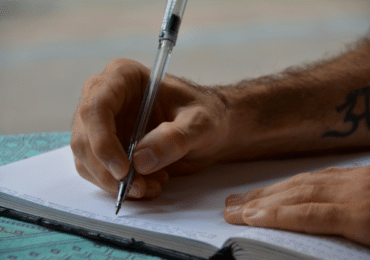When it comes to maintaining a healthy and comfortable living or working environment, one of the key factors to consider is effective pest control. Pests can cause significant damage to property, pose health risks, and create a general sense of unease. This is where the role of professional pest inspectors becomes invaluable. These experts are trained to identify, assess, and address pest-related issues, providing essential guidance and solutions to property owners. But what happens during an inspection?

Initial assessment
During the initial assessment of a pest inspection, the professional inspector initiates a conversation with the property owner to gain an understanding of any specific concerns or pest problems that have been observed. This discussion allows the inspector to gather valuable information about the nature of the issues and helps them create a pest management plan of action. Whether it’s a suspected termite infestation, an increase in rodent activity, or any other pest-related concern, the inspector will take note of these details to guide their examination.
Additionally, the inspector will inquire about the property itself, including its size, layout, and architectural features. Understanding the layout of the property helps the inspector determine potential entry points for pests and areas where they are more likely to harbor. This knowledge allows for a more targeted inspection, ensuring that no potential hiding spots or vulnerable areas are overlooked.
Visual inspection
The visual inspection involves a comprehensive assessment of both the interior and exterior of the property. The inspector meticulously inspects various areas, including the foundation, walls, roof, attic, crawl spaces, windows, doors, and any other potential entry points for pests. By conducting a thorough visual inspection, the professional inspector can identify existing pest issues, potential vulnerabilities, and signs of infestation. This careful examination allows them to develop an accurate understanding of the pest situation within the property and lays the groundwork for effective strategies.
Detection of pest damage
The inspector actively looks for signs of nesting, which may manifest as piles of shredded materials, fabric, or insulation. Droppings left behind by pests are another key indicator. The inspector looks for these fecal droppings, which can vary in size, shape, and color depending on the pest species. The presence of droppings helps identify the type of pest present and provides insights into the extent of the infestation.
Trails or tracks left by pests, such as grease marks along walls or floors, can be indicative of their movement patterns. These trails can help the inspector determine the areas of high pest activity and potential harborage sites.
Damage to woodwork, furniture, or structures is also closely examined. Pests like termites or carpenter ants can cause significant harm to wooden structures, leaving behind telltale signs such as hollowed-out wood, sagging floors, or visible tunnels. Additionally, pests like rodents may chew through electrical wires, causing potential hazards.
Identification of pests
In the course of a pest inspection, if the professional inspector encounters any indications or evidence of pests or infestations, the next crucial step is to identify the specific pests involved. Through their expertise and knowledge, they are equipped to distinguish various types of pests that may be present within the property. These may include termites, ants, cockroaches, beetles, flies, mosquitoes, or other insect species known for causing damage or nuisance. By recognizing the particular insect species, the inspector can gain insights into their behavior, preferred habitats, and potential risks they pose to the property.
By accurately identifying the pests present, the professional inspector can tailor their recommendations and treatments accordingly. Each type of pest requires a specific approach for control and eradication. With this information, property owners can better understand the nature of the infestation and collaborate with the inspector to develop an effective plan.
Assessment of risk and extent of infestation
Based on the findings gathered during the pest inspection, the professional inspector proceeds to assess the risk and extent of the infestation. This evaluation is crucial in determining the severity of the pest problem and understanding the potential risks it poses to the property and its occupants. The inspector considers factors such as the presence and activity levels of pests, the extent of damage caused, and the potential for further spread or escalation.
By analyzing the collected evidence, the inspector can ascertain whether the infestation is localized to a specific area or has spread throughout the property. This knowledge helps in formulating an appropriate treatment plan and determining the necessary steps to contain and eliminate the pests.
Furthermore, the inspector aims to identify the possible causes and sources of the infestation. This involves examining factors like structural vulnerabilities, environmental conditions, hygiene practices, and external factors that may attract or facilitate pest activity. Understanding the root causes helps in implementing targeted preventive measures to mitigate the risk of future infestations.
Recommendations and treatment plan
The inspector will propose appropriate treatment measures tailored to the specific pest problem. This may include suggestions for pest control methods such as chemical treatments, baits, traps, or exclusion techniques. Depending on the nature of the infestation and the type of pests involved, the inspector will advise on the most suitable approach to achieve optimal results.
In addition to the immediate treatment measures, the inspector recognizes the importance of preventive measures to ensure long-term pest management. They may offer advice on implementing practices that discourage pests from entering or reinfesting the property. This can involve sealing entry points, improving sanitation, reducing moisture sources, and implementing landscaping or structural modifications to minimize pest habitats.

Report and documentation
The report will document all the information they found during their inspection. It acts as a valuable reference document for property owners, pest control companies, or any other relevant parties involved in the process. It provides a clear overview of the current pest situation, the steps to be taken for treatment, and guidelines for long-term pest prevention. Property owners can use the report to make informed decisions about pest control measures and to communicate effectively with pest control professionals.
Overall, professional pest inspectors contribute significantly to maintaining healthy, safe, and pest-free environments. Their role goes beyond identifying and addressing current infestations; they also provide guidance on preventive measures to minimize the risk of future pest problems. By collaborating with these experts, property owners can effectively combat pests and implement long-term pest management strategies.

